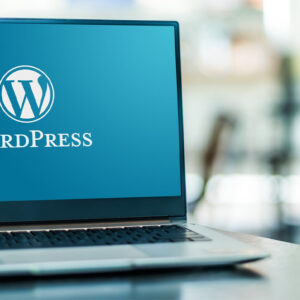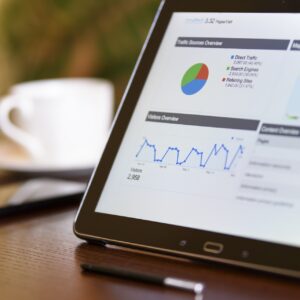If you are selling products on Amazon and want to grow your business, going international is a smart choice. With Amazon Global Selling, you can reach millions of new customers across the world. This guide will help you understand how to launch your brand in countries like the UK, Europe, UAE, and more.
Selling globally may seem hard at first, but Amazon makes it easier. Whether you’re a small brand or a growing seller, this article will show you each step—from starting your first listing to scaling your business worldwide.
Why Sell Internationally on Amazon?
Selling in other countries means more people can buy your products. You are not just selling to customers in your home country. You are now building a global brand. Here’s why it’s worth it:
- More Customers: Millions of people shop on Amazon in different countries.
- More Sales: More customers can lead to more orders and bigger profits.
- Stronger Brand: A global brand has more trust and visibility.
- Year-Round Sales: Different countries have different shopping seasons.
Example: Sarah started selling skincare products in the U.S. When she joined Amazon UK and UAE, her orders doubled during the holidays. Now she runs a full-time international business.
Step 1: Choose the Right Market
Amazon has marketplaces in countries like:
- United Kingdom (amazon.co.uk)
- Germany (amazon.de)
- France (amazon.fr)
- Italy (amazon.it)
- Spain (amazon.es)
- United Arab Emirates (amazon.ae)
- Japan, India, Canada, Australia, and more
How to Choose?
Think about:
- Where are your products already in demand?
- Can you handle taxes and shipping in that country?
- What language is spoken there?
Tip: Start with one country like the UK (same language) before expanding to other languages.
Step 2: Set Up Your Amazon Global Seller Account
You don’t need a new account for each country. Amazon Global Selling allows you to use one account to manage different countries.
Steps:
- Go to sell.amazon.com
- Click on “Start Selling”
- Choose Professional Account
- Add your business details, bank info, and ID
Note: You may need to provide tax documents depending on the country.
Step 3: Prepare Your Products for the International Market
Before you list your items, make sure they are ready for global customers.
Things to Consider:
- Are your products allowed? Check each country’s rules.
- Labeling: Add local language labels if needed.
- Safety & Standards: Follow country-specific safety rules.
Example: A toy seller needed CE certification to sell in Europe. He added it and now ships across the EU.
Step 4: Translate and Optimize Listings
Customers want to read product details in their own language. If you want sales, good translations matter.
How to Do It:
- Use Amazon Translation Services or hire a native speaker.
- Translate:
- Title
- Bullet points
- Product description
- Keywords
Keyword tip: Use terms people in that country search for. For example, in the UK, people search for “trainers” instead of “sneakers.”
Step 5: Set Up Fulfillment (FBA or FBM)
There are two main ways to fulfill orders:
Option 1: Fulfillment by Amazon (FBA)
- Send your products to Amazon’s warehouse
- Amazon stores, packs, and ships your items
- Amazon also handles customer service
Option 2: Fulfillment by Merchant (FBM)
- You store and ship your products
- You handle returns and customer service
Most sellers start with FBA because it’s easier and faster for international shipping.
Step 6: Handle Currency and Payments
Amazon pays you in your local currency, but your customers pay in theirs.
- Add a bank account with Amazon Currency Converter
- Choose a bank that supports international wire transfers
- Keep an eye on currency conversion fees
Pro Tip: Use Wise or Payoneer to reduce fees and get better exchange rates.
Step 7: Take Care of Taxes and Regulations
Each country has different tax rules.
UK & EU:
- VAT (Value-Added Tax) is required
- You may need a VAT number in each country you sell in
UAE:
- May need to register for VAT if selling regularly
Tip: Hire a tax expert or use Amazon’s VAT Services.
Step 8: Promote Your Products Globally
Just listing products isn’t enough. You need to market them.
What You Can Do:
- Use Amazon Sponsored Ads (PPC)
- Create A+ Content to improve listings
- Run discounts and coupons
- Use external marketing (Instagram, YouTube, Blogs)
Example: John used Amazon PPC in the UK and saw a 45% sales increase in just 3 weeks.
Step 9: Handle Returns and Customer Service
Customers expect fast help. Each country has return laws.
Tips:
- Use FBA to let Amazon handle returns
- Add clear return policies
- Provide customer service in local language
Step 10: Monitor Performance and Scale Up
Keep tracking:
- Sales numbers
- Ad spend
- Customer reviews
- Inventory levels
Use tools like:
- Amazon Seller Central reports
- Helium 10
- Jungle Scout
When you see success in one market, repeat the process in the next one.
Real Seller Experience: Ayesha’s Story
Ayesha started selling handmade candles in Pakistan. She joined Amazon UAE using FBA. She got good reviews and repeated the process in the UK. Now she sells in 4 countries and earns more than $10,000 per month.
Her tip: “Focus on one country at a time. Do it right, then grow.”
Challenges and How to Solve Them
| Challenge | Solution |
| Language Barrier | Use professional translation |
| Customs Issues | Work with Amazon Global Logistics |
| High Shipping Costs | Use FBA or local 3PL services |
| Tax Confusion | Hire a VAT expert |
| Low Sales in Start | Run ads and offer promotions |
Final Thoughts
Going global with Amazon is not as hard as it seems. With the right plan and steps, you can turn your small shop into a worldwide business. Start with one country, follow this guide, and scale step-by-step.
Remember: “Think big, start small, and move fast.”
If you’re serious about growing your Amazon business, don’t wait. The world is waiting for your
Brand.
FAQ:
1: What is Amazon Global Selling?
Amazon Global Selling is a program that allows sellers to list and sell their products in Amazon marketplaces around the world, such as the UK, Europe, UAE, Canada, and more. It helps sellers reach international customers and grow their brand globally.
2: Do I need a new account to sell in another country on Amazon?
No, you don’t need a new account for every country. You can use one Amazon Seller Central account to manage multiple marketplaces through Amazon Global Selling, depending on your region.
3: Which countries can I sell in using Amazon Global Selling?
You can sell in countries like:
- United Kingdom
- Germany
- France
- Italy
- Spain
- United Arab Emirates (UAE)
- Japan
- Australia
- Canada
- India
- And more
4: Do I need to speak the local language to sell in other countries?
No, but you do need to translate your product listings into the local language. Amazon offers translation services, or you can hire a native speaker to do it properly. Good translation improves customer trust and sales.
5: What is the difference between FBA and FBM when selling internationally?
- FBA (Fulfillment by Amazon): You send products to Amazon’s warehouse in the target country, and Amazon handles storage, shipping, returns, and customer service.
- FBM (Fulfillment by Merchant): You store and ship items yourself from your own warehouse or third-party logistics provider.
FBA is usually easier for international sellers.
6: How do I get paid when I sell on international Amazon marketplaces?
Amazon converts the payment from the local currency to your bank’s currency using Amazon Currency Converter or through third-party payment providers like Payoneer or Wise. The money is transferred to your bank account based on your payment settings.
7: Do I need to register for VAT or other taxes in other countries?
Yes. In most cases, especially in the UK and EU, you must register for VAT (Value-Added Tax) and comply with local tax rules. Amazon offers VAT Services to help you with this.
8: How do I promote my products on Amazon’s international marketplaces?
You can use Amazon marketing tools such as:
- Sponsored Ads (PPC)
- A+ Content
- Coupons and Deals
- Amazon Brand Registry
You can also promote on social media or run influencer campaigns to drive traffic.
9: What should I do if I receive returns from international customers?
If you’re using FBA, Amazon will handle returns and customer service for you. If you use FBM, you need to clearly state your return policy and handle return shipping and refunds yourself, based on local laws.
10: How can I grow my brand after launching internationally?
To grow your brand:
- Monitor your sales and reviews
- Optimize listings with better keywords and images
- Expand to more countries step-by-step
- Launch new products for each market
- Build your brand with consistent marketing and customer service




